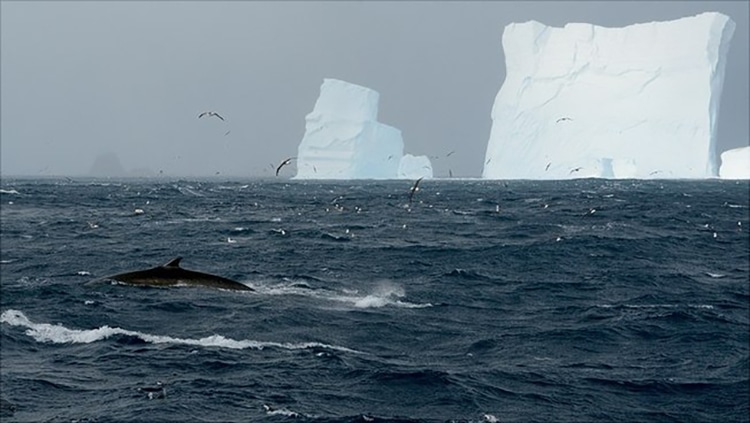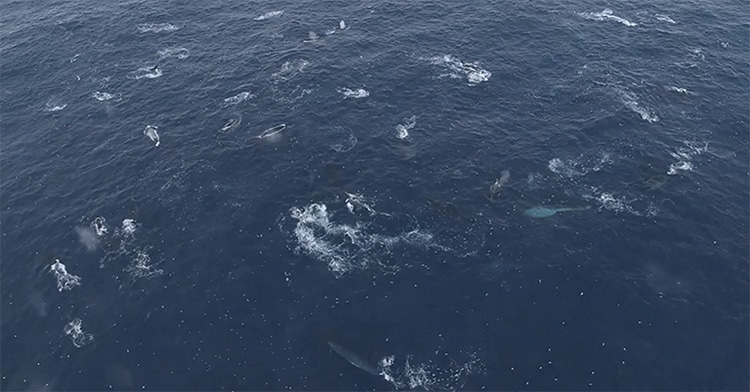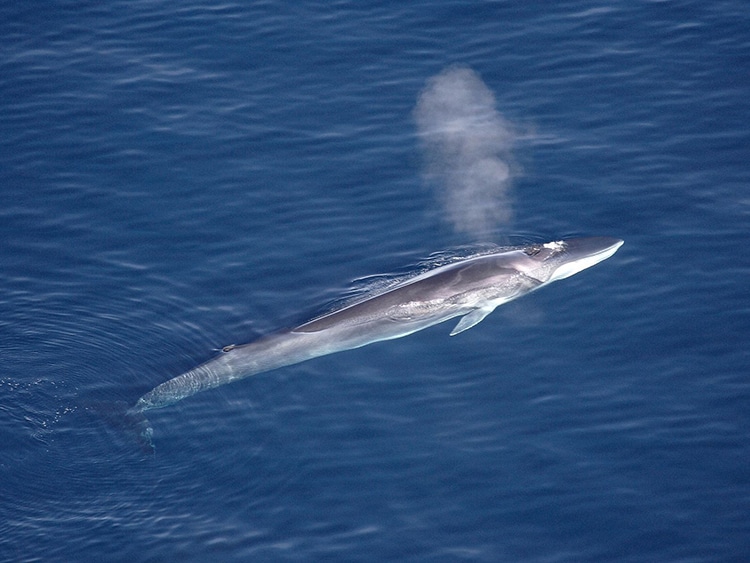A fin whale in the Antarctic.
The species was heavily hunted in the 20th century whaling boom.
In the Southern Hemisphere, their numbers sunk to endangered levels.

A fin whale in the Antarctic. (Photo:Dan Beecham/University of Hamburg)
However, the world’s second largest whale is making an encouraging comeback in the Antarctic region.
Scientists estimate their southern numbers may be 8,000 strong, bumping them up to vulnerable status.
The fin whale can be over 60 feet long and weigh 100,000 pounds.

A fin whale feeding aggregation. (Photo: Figure 3,BBC (OSM video 2)/Nature)
These massive mammals live 70 to 80 years without being hunted.
However, boats are still a danger to the species.
Like other whales, they eat krill.

A fin whale. (Photo: Aqqa Rosing-Asvid viaWikimedia Commons,CC BY 2.0)
Fin whales come together in aggregations of various sizes to feast at the surface.
Recently, a BBC team filmed a massive swarm of 150 whales unlike any seen in years.
Off the coast of Antarctica, fin whales leaped and danced as they fed in the cold waters.
Helena Herr, a paper author, said toABC.
It was thrilling just standing there and watching it.
Despite their large size, the latter’s breeding places and patterns remain a mystery.
Researchers tagged several whales, but the pandemic interrupted tracking.
But the rebounding population is evidence that conservation efforts are working, and that the whales themselves are resilient.
While threats from boats and climate change remain, the return of the whales is something to celebrate.
Fin whale populations in the southern hemisphere are rebounding from endangered to vulnerable.
A fin whale feeding aggregation.